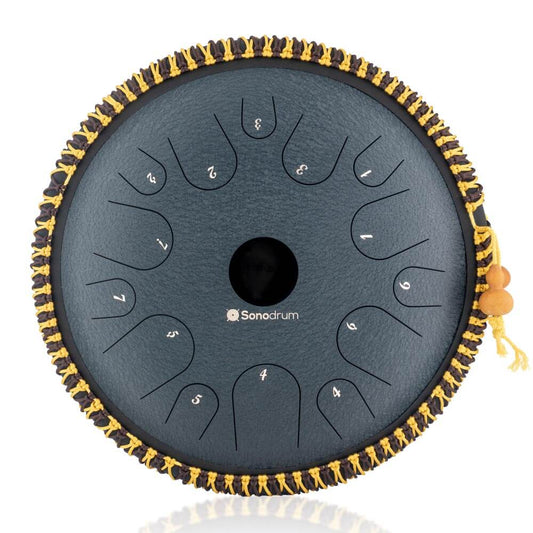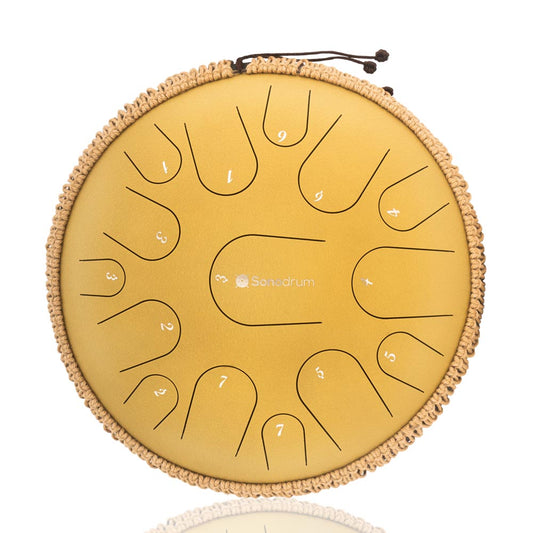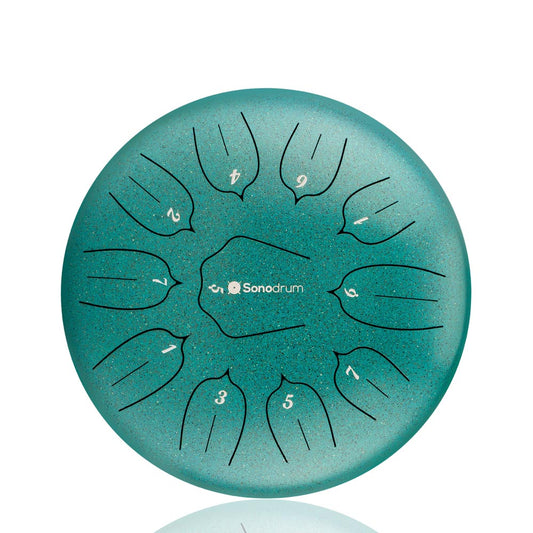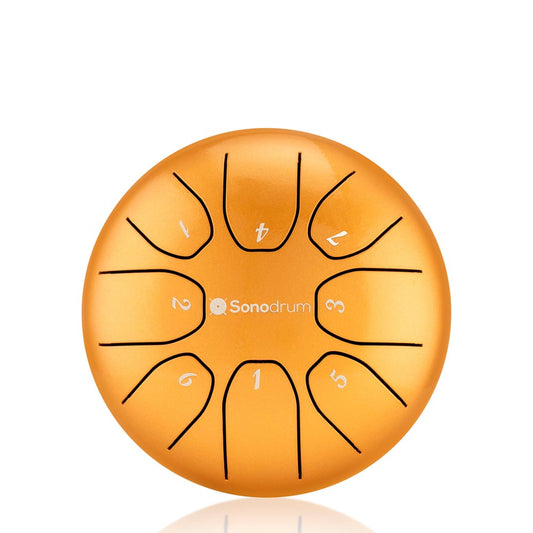Although they are relatively new in the world of music compared to older instruments like flutes or even guitars, Handpans have quickly gained a large following due to their ethereal, unusual, and meditative sound. However, being a newer instrument, less is generally known about the Handpan, so many questions remain unanswered for beginners (and even experienced musicians), such as "How does a Handpan work?"
If you find yourself captivated by the allure of this exquisite instrument but are unsure about its construction, history, price, or selecting an instrument based on your current level of knowledge, our series of blog articles with relevant information can help you.
Today, we'll delve into the workings of the Handpan, exploring scales, different playing techniques, and much more. Afterwards, you'll certainly be able to answer the specific question "how does a Handpan work." Enjoy reading!
The functioning of a Handpan?
The Handpan consists of two steel shells connected at the rim. Inside the instrument, there is nothing that determines the sound of the instrument. Handpans and similar instruments operate on a very special principle of tension in the plane.
It is a widespread misconception that the "notes" or "tone fields" on a Handpan are under tension, like the skin of a drum. However, it is precisely the opposite.
In fact, the metal within the tone field is under compressive stress. The metal within the tone field pushes in all directions against the rim. This creates a state of controlled curvature, similar to metal lids on jars.
To make the tone fields sound pleasant to the ear, some vibration modes are forced into the sound by tuning the instrument. These frequencies are usually an octave of the fundamental pitch (the octave corresponds to twice the fundamental pitch) and a second harmonic, which is typically tuned to a compound fifth (three times the fundamental pitch).
It is this harmonic relationship of frequencies in each note that produces the unique sound of tuned steel, which so many people love and desire.
So is a Handpan like a drum?
As previously discussed, the Handpan is actually the opposite of a drum.
What are drums?
Drums are percussion instruments that produce sounds when a player strikes a skin/membrane - a tensioned membrane attached to the frame or shell of the instrument. This makes drums a membranophone.
In musical history, skins for drums were made from animal parts such as goat hides, but today's drums almost always use synthetic skins. Drummers play drums with their hands or with beaters, drumsticks, sticks, wire brushes, and pedals.
What are Handpans?
The Handpan is a type of idiophone.
How does a Handpan produce a sound?
As an idiophone, it primarily produces sounds through its own vibration and without the aid of compressed air, tensioned membranes, strings, or electricity. Other instruments falling into this category include bells, cymbals, tambourines, and even mallet instruments such as xylophones or marimbas.
Although individual designs may vary slightly, both for beginners and experts, the Handpan always consists of two convex steel halves connected to each other (which sometimes gives the impression of a flying saucer). The upper half of the instrument features a central dome called the "Ding," which produces the fundamental or bass tone. The "Gu," on the other hand, is an opening on the underside of the instrument that provides resonance and generates the warm, sustained tones characteristic of a Handpan.
Around the "Ding," there are circularly arranged notches, at least seven in number, each representing a specific note and tuned according to a particular (diatonic) scale such as major, minor, harmonic minor, and many others. This makes it easier for a beginner to start playing and improvise more freely, as from a harmonic perspective, there are basically no "wrong" notes. However, it might sound a bit off if you buy a used Handpan that is out of tune or if your Handpan becomes detuned after many hours of play.
What is the diatonic scale?
A diatonic scale is a musical scale comprising seven notes (also called a heptonic scale). In diatonic scales, within an octave, there must be two half-tone intervals (half steps) and five whole-tone intervals (whole steps). The two half-tone intervals should be separated by two and three tones, respectively. If you were to play all the white keys on a piano keyboard starting from C, you would have played a diatonic scale.
Does a Handpan only work with hands?
When played with the hands, this instrument produces soft, harmonic, hammer-like tones. The resulting sound can vary in pitch and sustain depending on which part of the hand is used and where exactly on the surface it is struck.
You can also use mallets with the Handpan, but this should be left to experts as beginners could easily damage the instrument. When mallets are used, entirely different sounds are produced, which are often used for recordings via amplifiers. However, as mentioned, this is more for advanced players and experts.
Using gloves to play the Handpan
All Handpans can be played with gloves. It is very comfortable to handle and play a Handpan with gloves because it changes the sound of the instrument. The tones sound shorter, the volume is lower, and the overall atmosphere is much softer.
Using mallets to play the Handpan
The Handpan from Sonodrum can be played with the hand or with suitable mallets. The technique of playing with mallets is radically different, and so are the sensations.
Furthermore, the resonance created by the contact with buffers and latex adds a new dimension to the instrument. The angle and force at which the striking notes are played determine their sound. Therefore, there are various sticks available that allow you as an advanced player to explore different playing techniques.
Is it difficult to learn Handpan?
Learning to play the Handpan is not difficult. You can start by intuitively trying to create melodies, and then you can use our Handpan music book for assistance. The book provides a detailed explanation of the instrument, along with many songs to play on the Handpan. The musical notes are converted into Handpan notes and symbols. It sounds more complicated than it really is!
My Handpan isn't working!
Do some of the tones of your Handpan sound a bit off? Is it out of tune? If you've spent many hours with your Handpan, you might think you know it well enough to try tuning it yourself.
We understand the temptation, but similar to building a Handpan, we recommend that only a professional tunes the instrument. A Handpan tuner is skilled in the art of tonal tuning. It's very difficult, and having just a "good ear for music" won't suffice. This particular skill is a craft that takes years to master. So, don't think you can tune your Handpan with your guitar tuner. Professional instrument makers use specialized tuning software.




